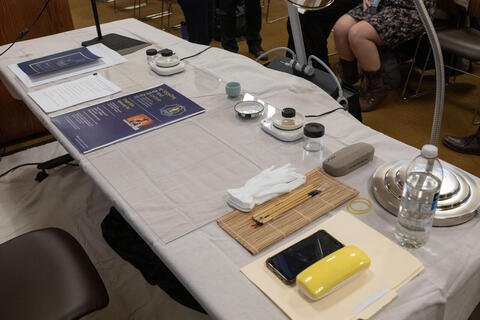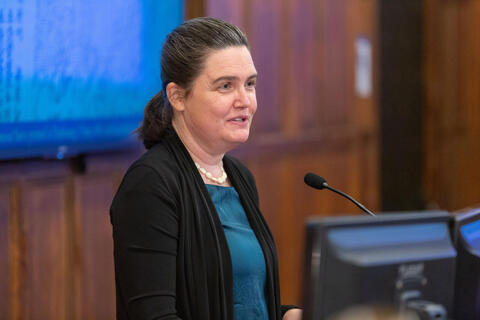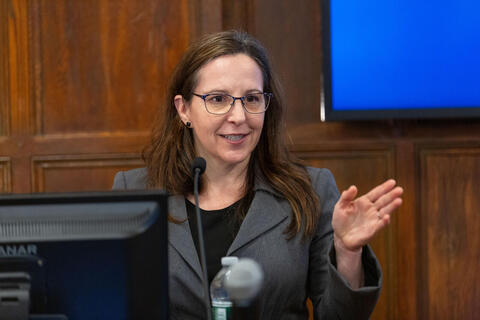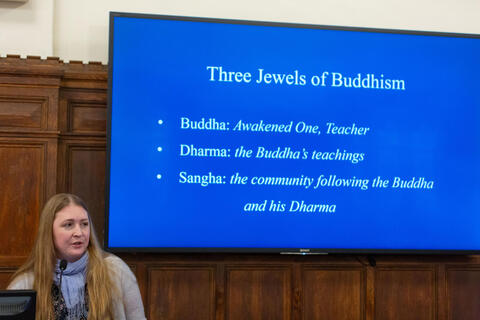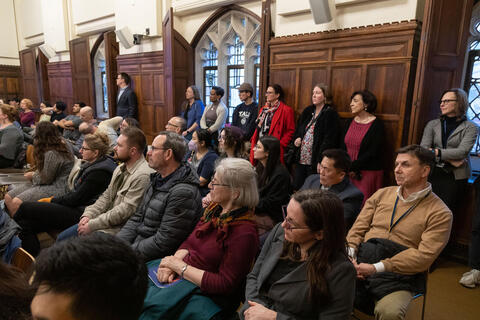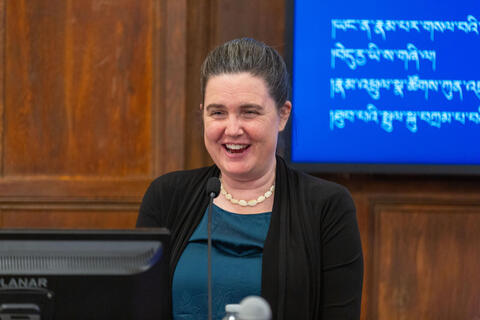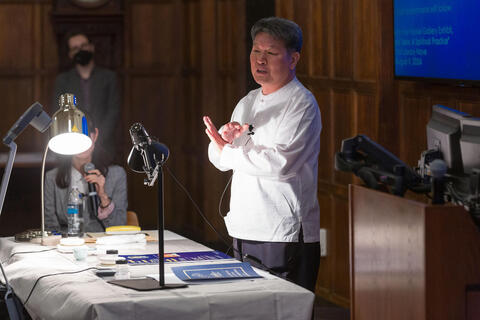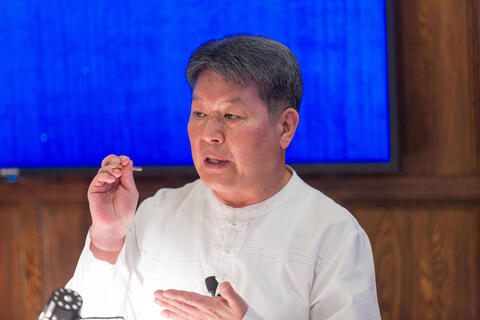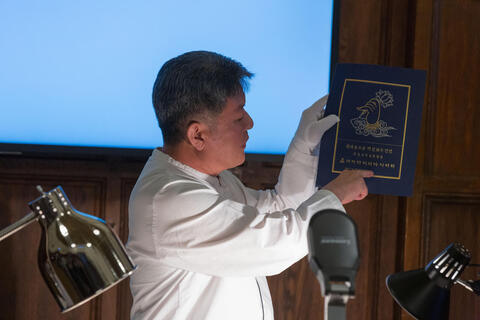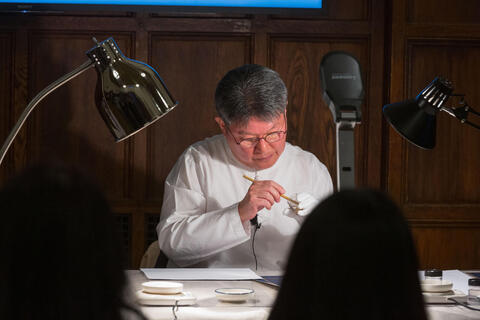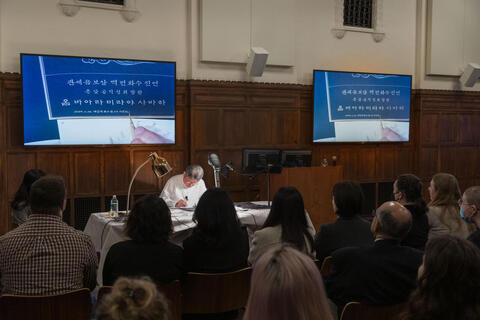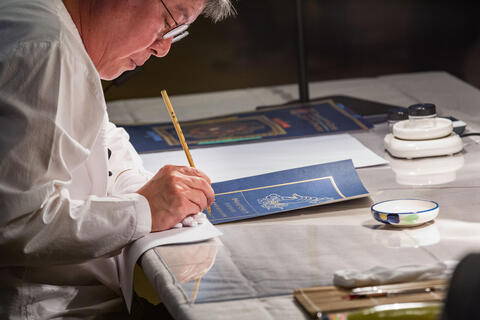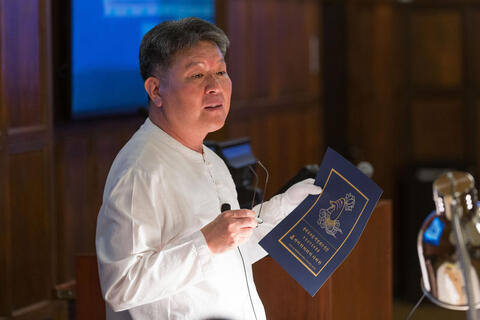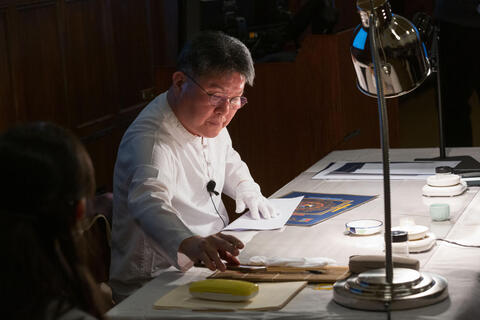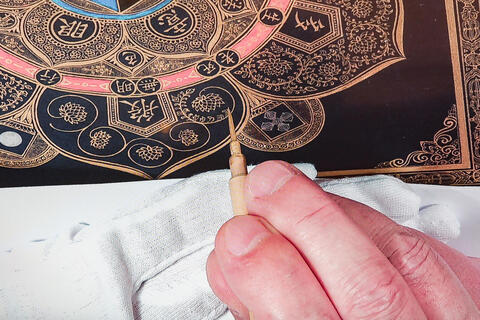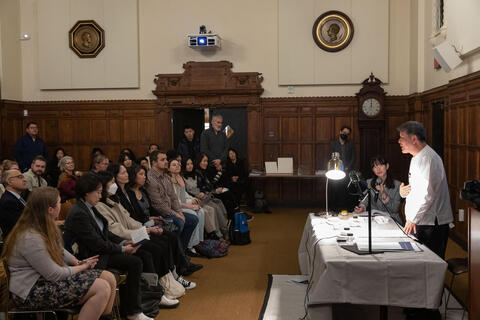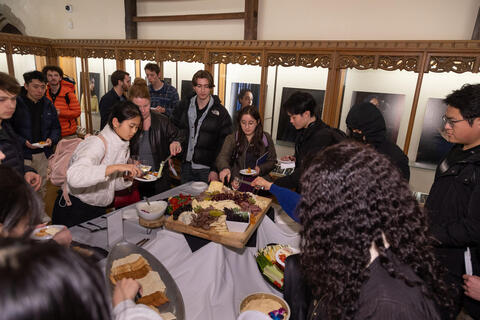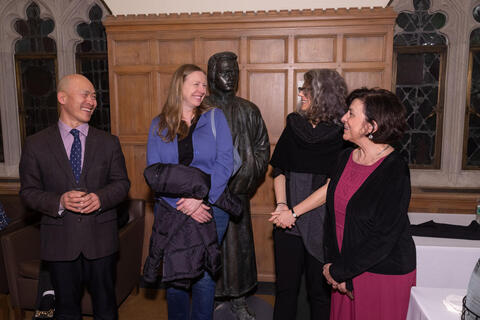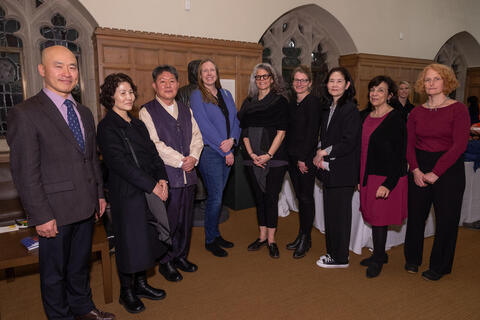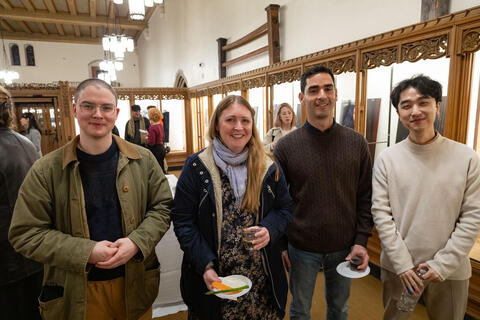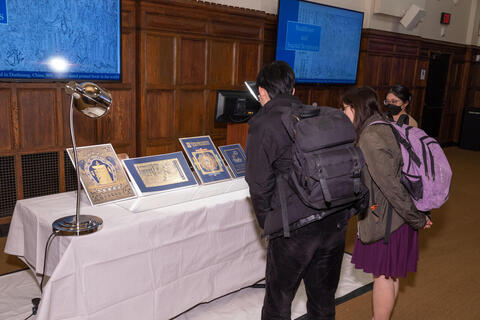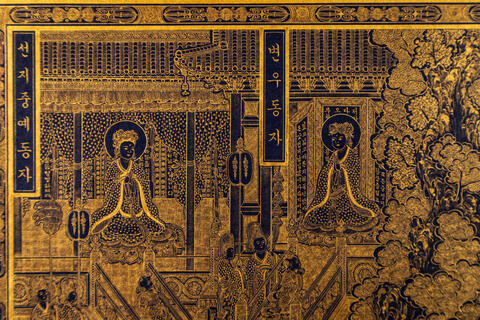On February 27, 2024, the Council on East Asian Studies hosted Master Dagil Kim Kyeong-ho for a lecture and demonstration of Sagyŏng, the spiritual and artistic practice of Buddhist sutra transcription. Master Kim also displayed some of his original rare works after the demonstration. This event was hosted in conjunction with the Hanke Gallery Exhibit, “Copying Sacred Texts: A Spiritual Practice,” on display in the Sterling Memorial Library Nave, February 19 – August 11, 2024.
Dagil Kim Kyeong-ho is a poet, calligrapher, and artist who has devoted himself to the continuation of the rare art and technique of Sagyŏng (Buddhist sutra transcription) for the last 30 years. He is the author of An Introduction to Sagyŏng, the first unique publication on Sagyŏngin the modern times in Korea. He holds an M.A. in Art History from Dongguk University, and in 1997, he won the Grand Prize in the first-ever Buddhist Scripture Transcribing Contest co-organized by the Jogye Order of Korean Buddhism and Eastern Calligraphers’ Association. He has presented numerous solo exhibitions, including 15 shows organized by the Korean state. He has also taught traditional Sagyŏng at the universities, Buddhist television channels, and Dong A Cultural Center. He has been numerously invited by prestigious organizations to give special lectures and demonstrations. Over decades, he has contributed numerous essays of his Sagyŏng research to various Buddhist magazines. Furthermore, he has advised and participated in numerous national heritage research and restoration projects. As the highest authority in Sagyŏng, he serves as the President of the Korean Transcribed Sutra Research Association. Currently he is developing a new style of Sagyŏng, incorporating strengths of The Book of Kells in Celtic Christianity and The Shahnama of Shah Isma’ll (The Book of Kings) in Islam in an attempt to share Sagyŏng with a wider audience.
This event is generously funded by the Glorisun Global Network for Buddhist Studies.
Photographs by Harold Shapiro


